Tuesday 4th June 2024
The hill town of Fougères is dominated by its castle and fortifications. The castle itself, is one of the most impressive in Europe, having evolved through the centuries since its founding in the 12th century.
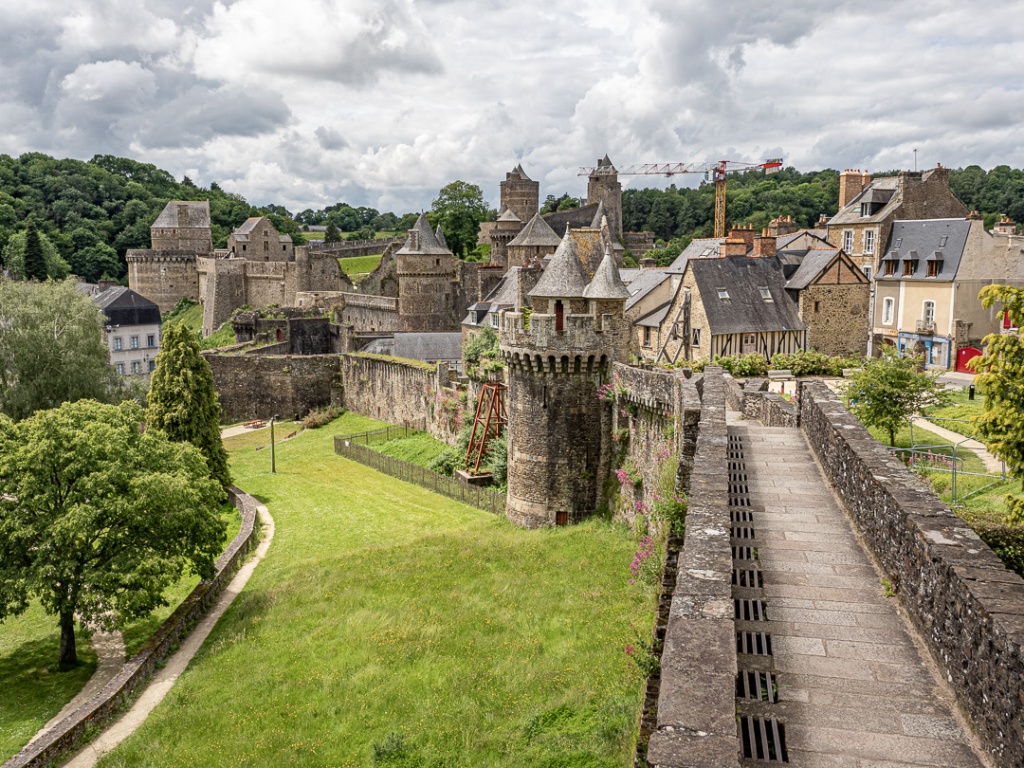
It was built on an outcrop of rock, within a loop of the Nançon river, acting as a natural moat.
The castle is very tall, as is the town alongside it, meaning that just getting around, with steep streets everywhere, can be challenging. Where we were parked for the night, there is an elevator and foot-bridge to take you up to the lower street level, but that is where the assistance ends.
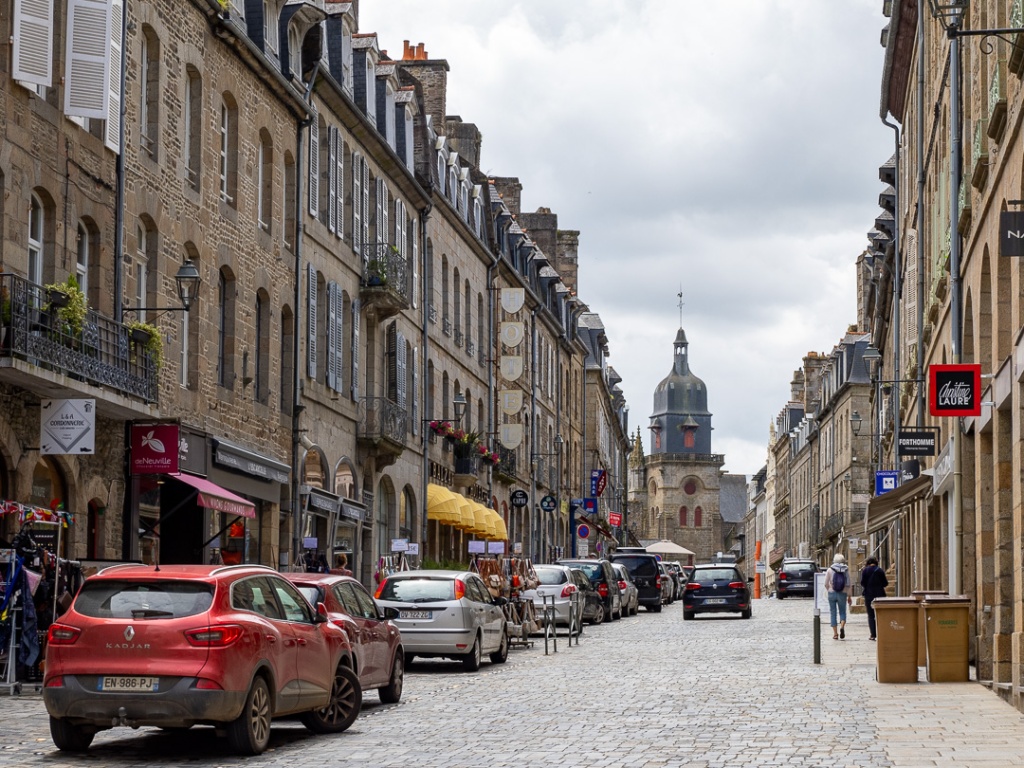
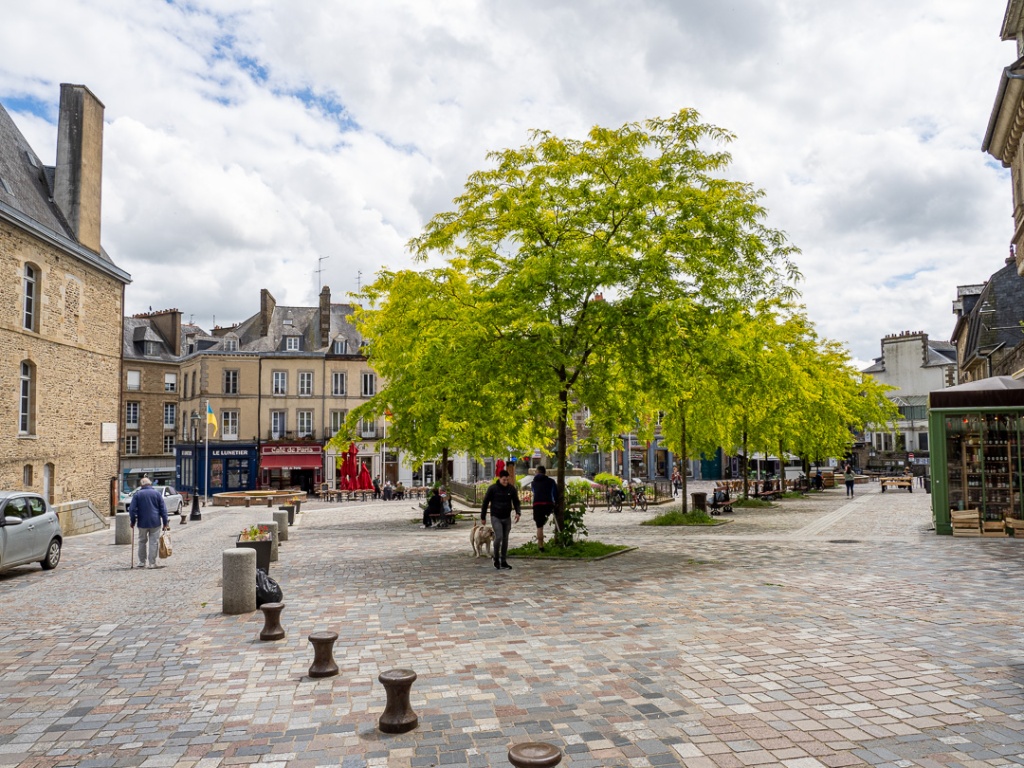
From the town, to get to the castle entrance, you have to descend a very long way. Just outside the entrance there is a courtyard cafe.
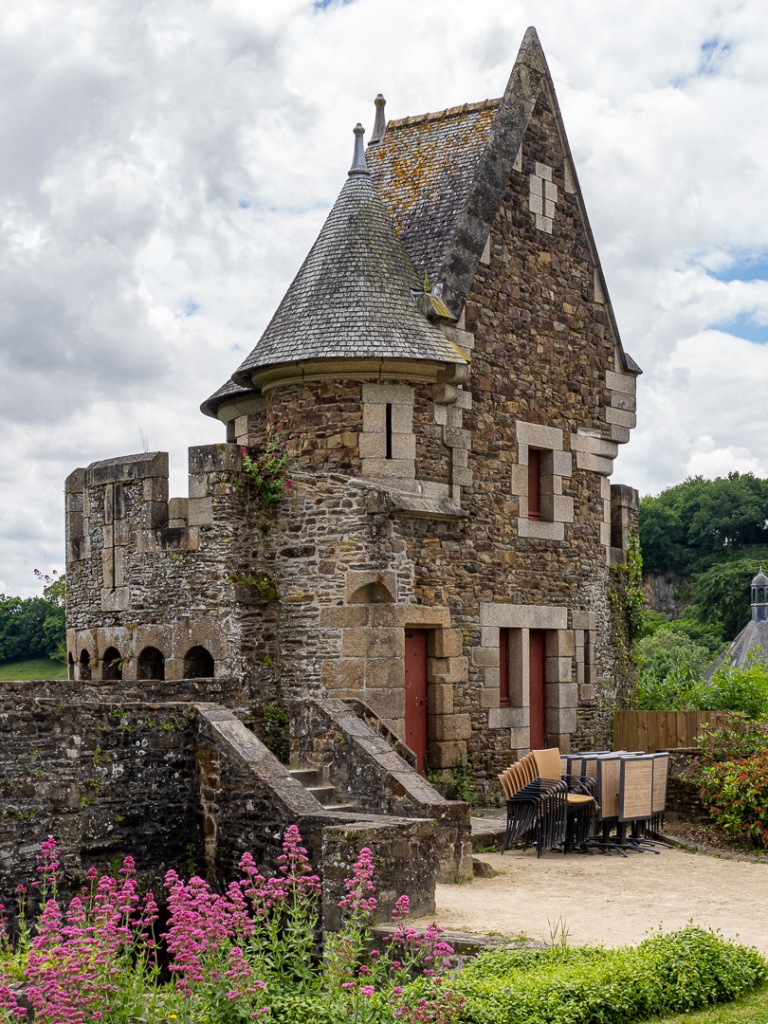
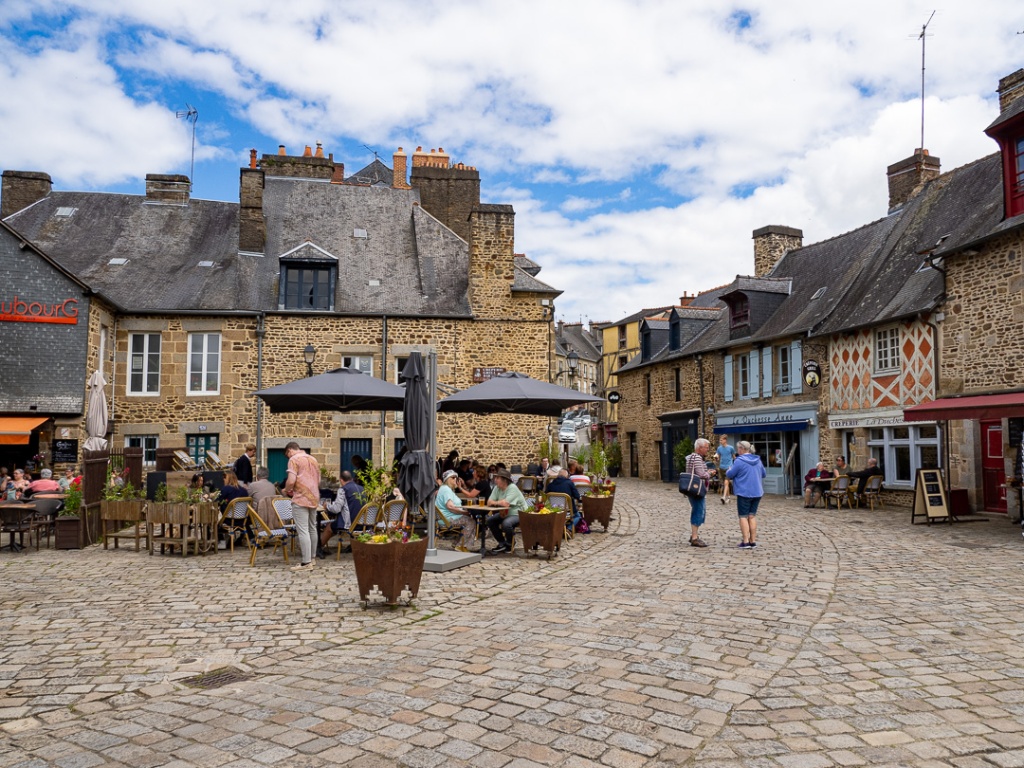
Having paid 10 € each admission, we explored the multitude of towers and walls of the castle.
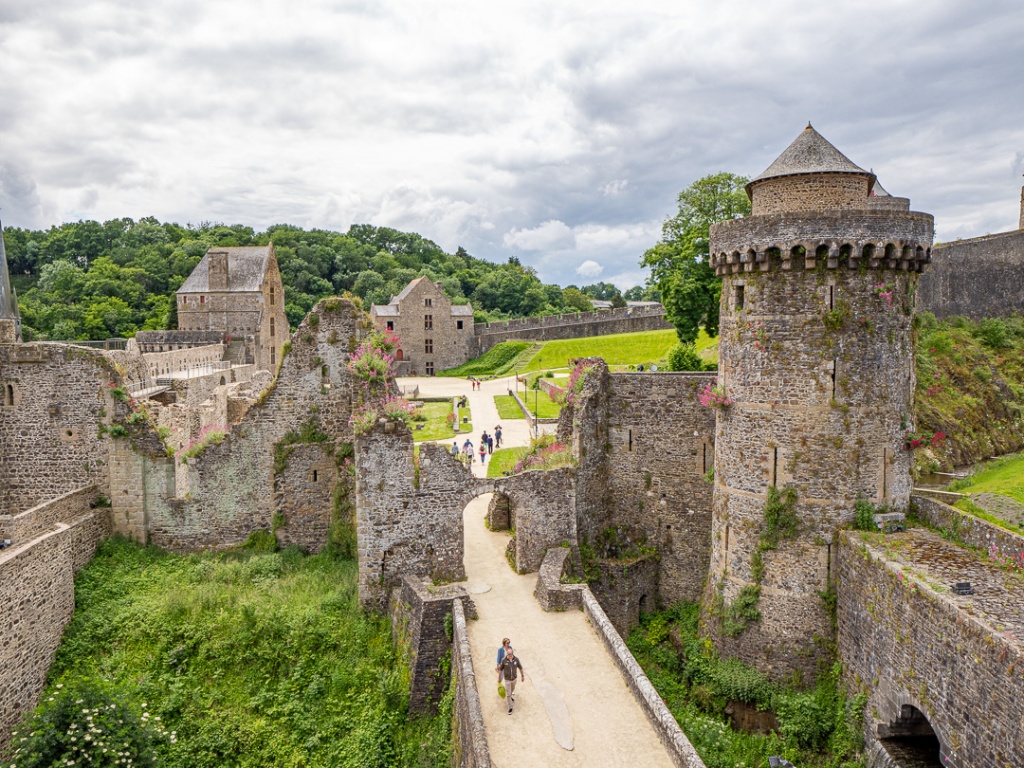
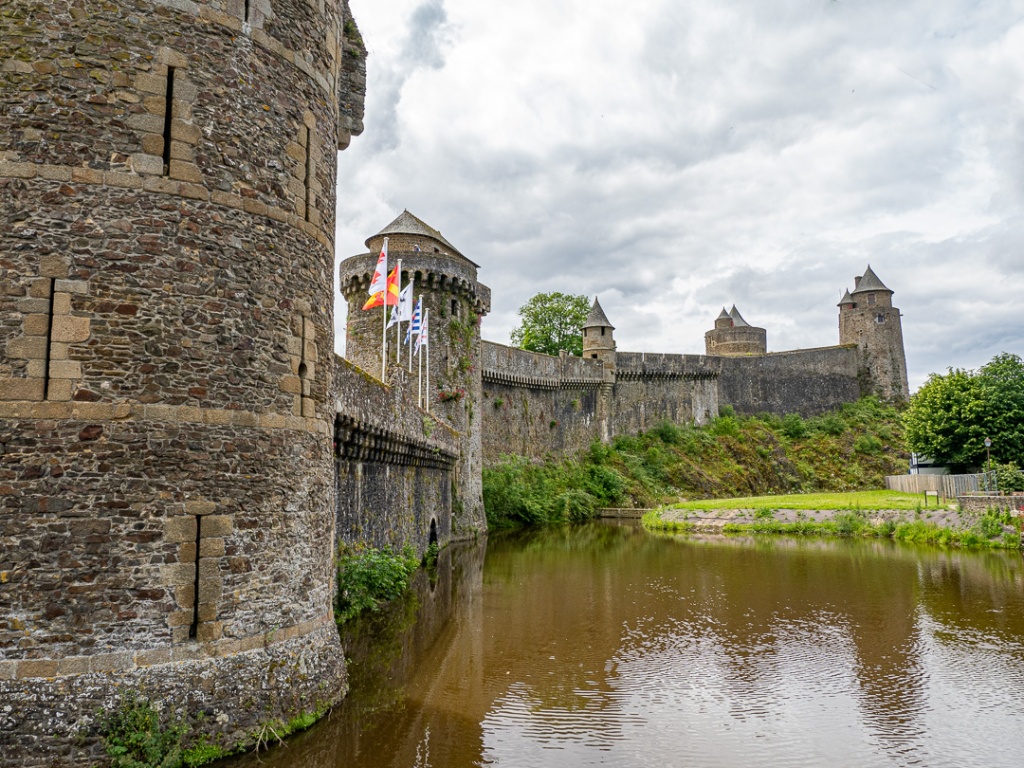
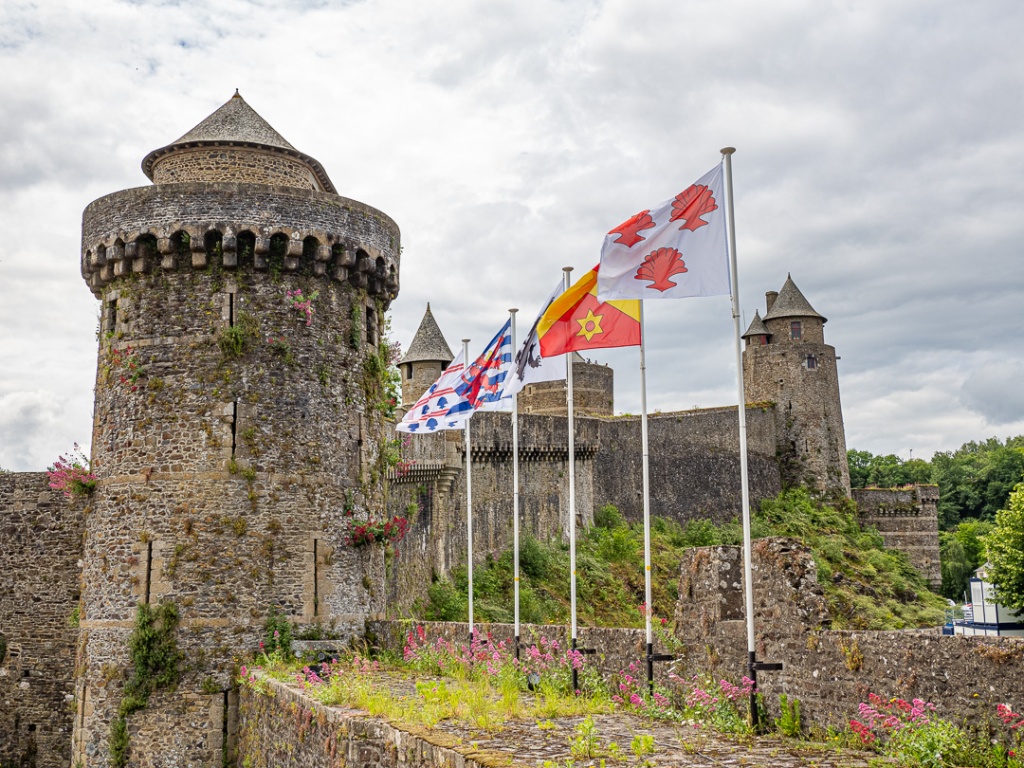
Water is managed extensively within the castle, with some of the river’s flow diverted through the outer bailey and driving four water-wheels. One of these is used to generate electricity for the visitor centre.
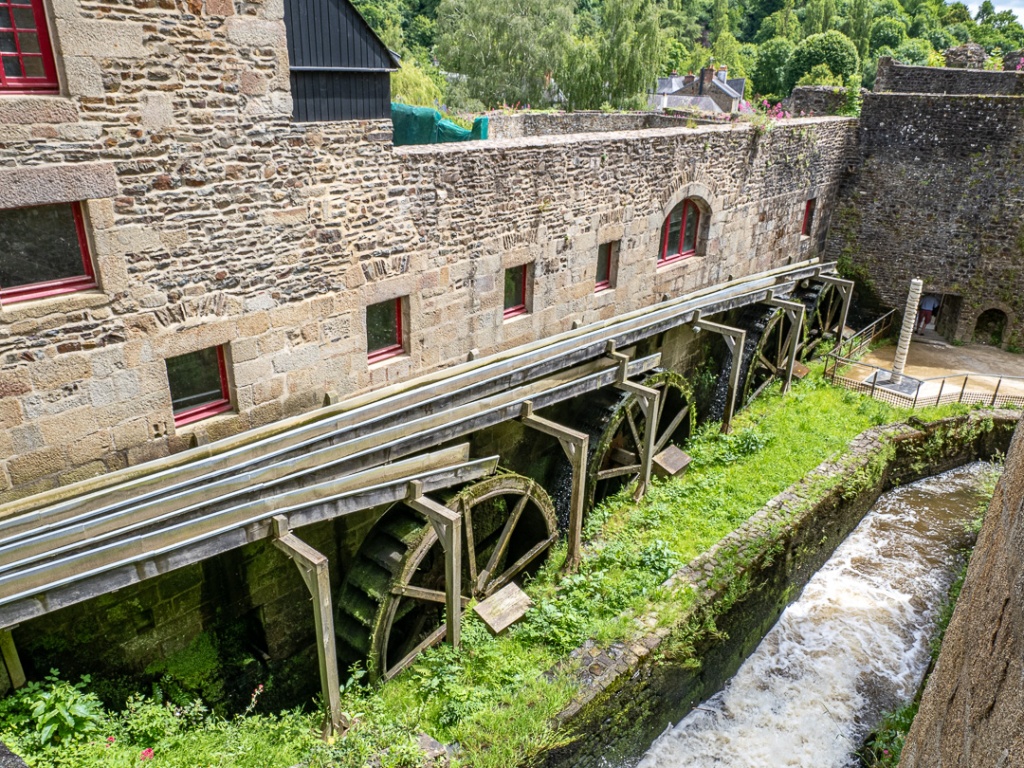
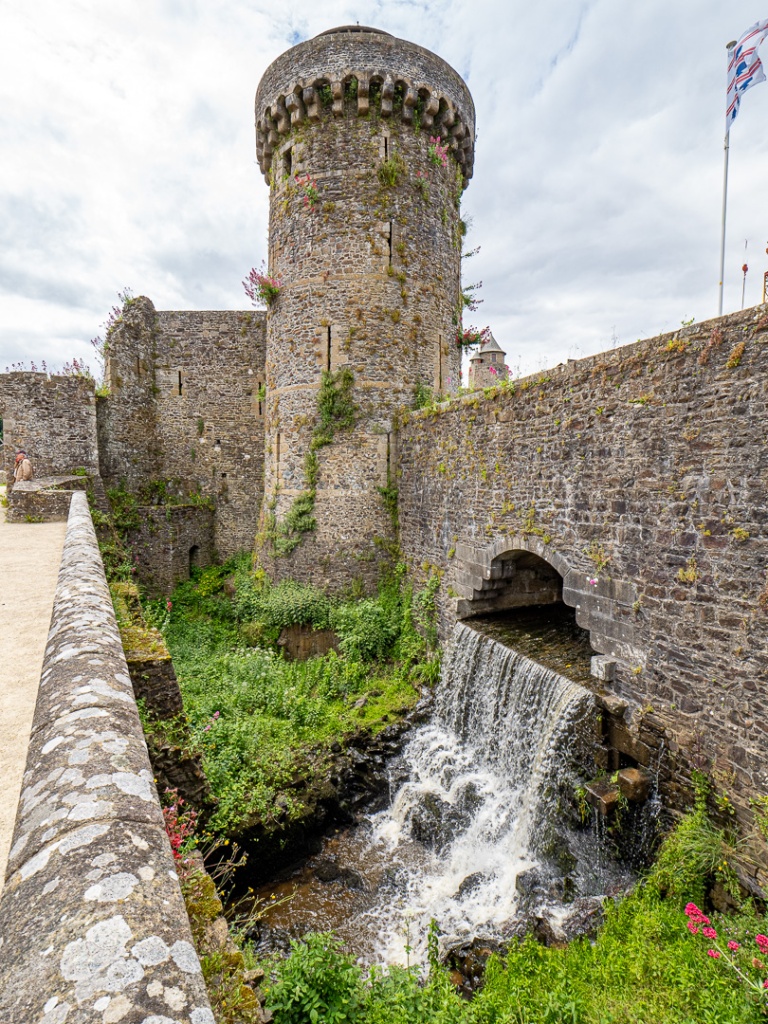
To access the walls, the steps are really steep and in the towers many are barely wide enough to place your foot on securely.
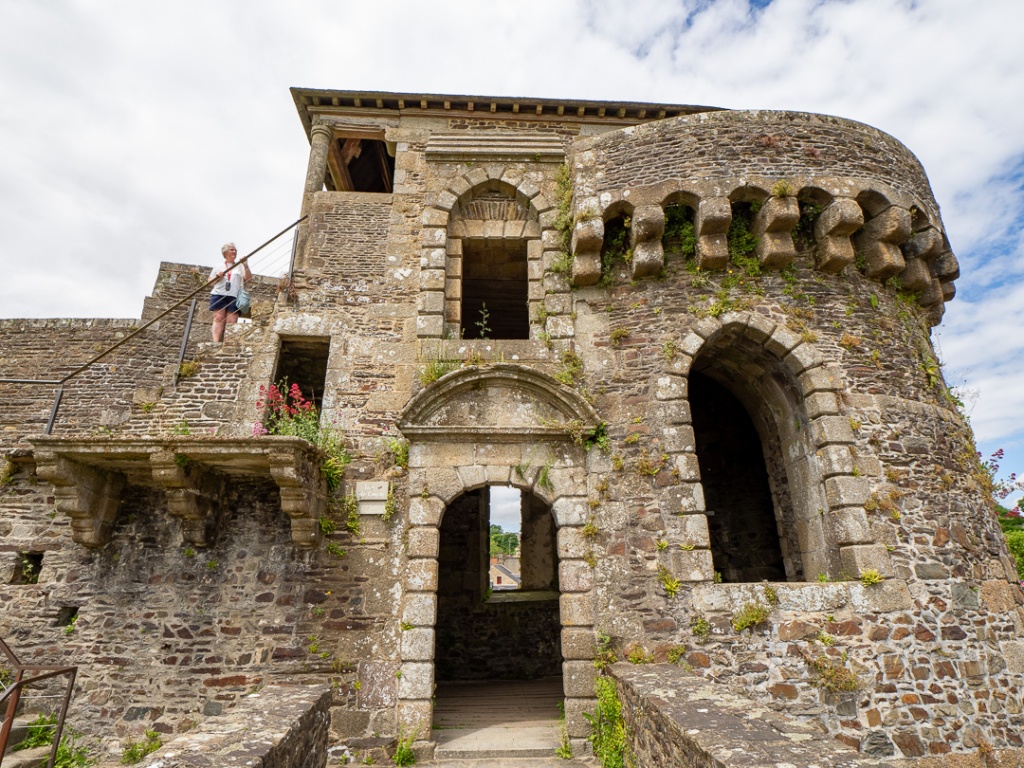
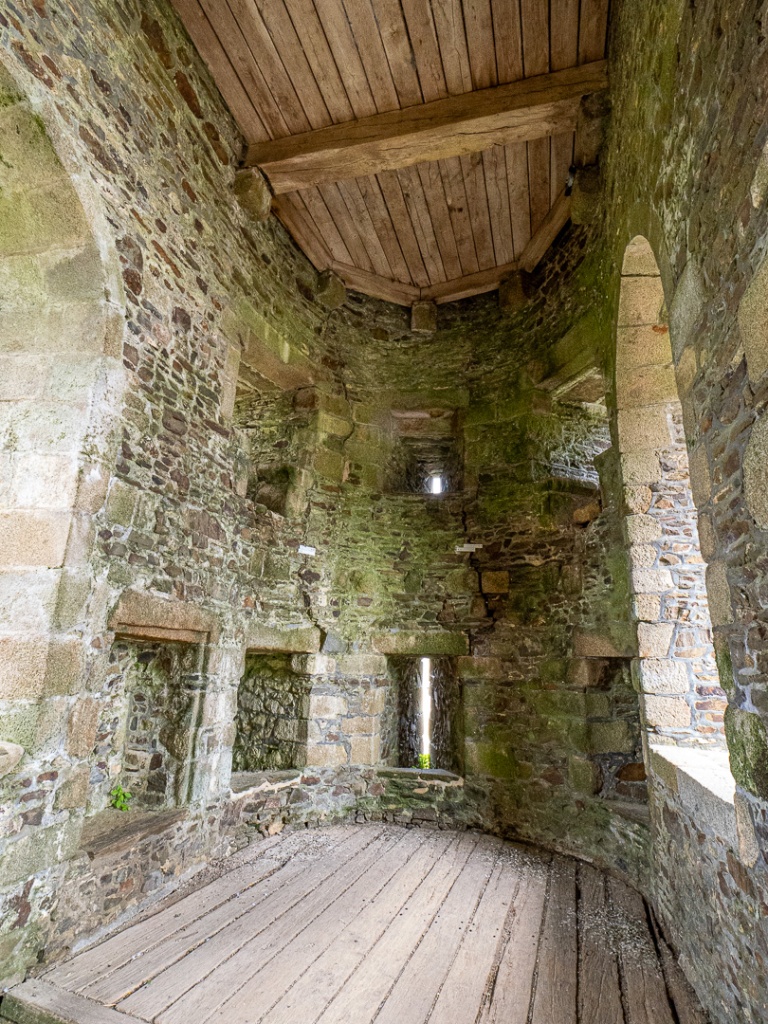
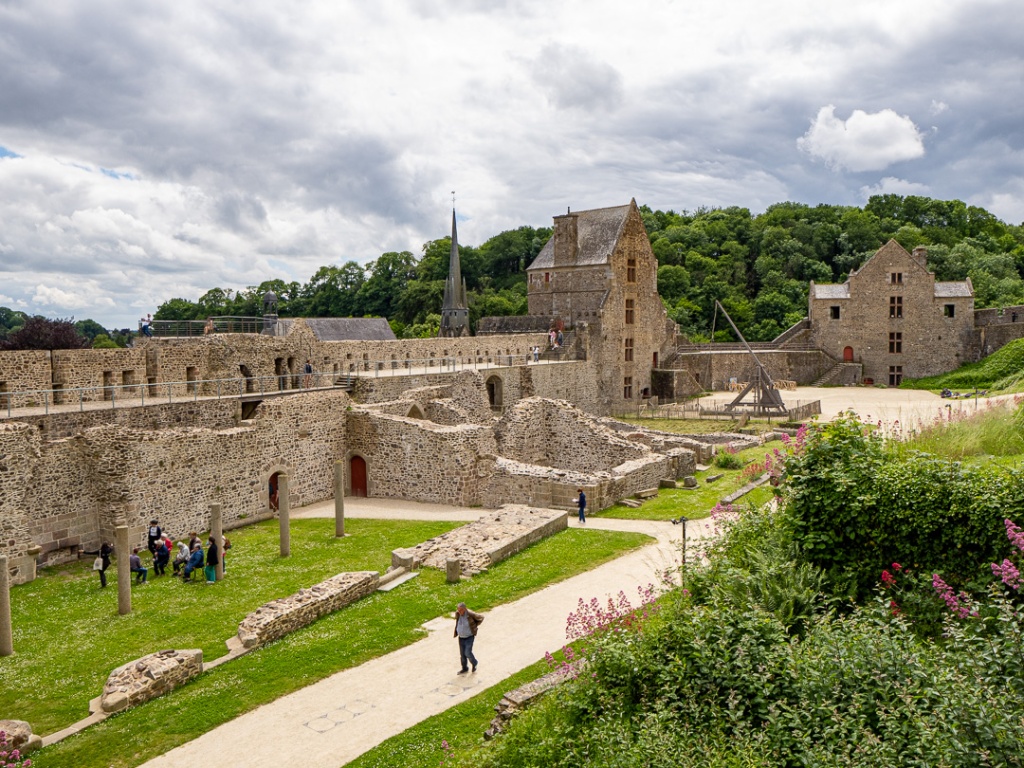
When you look down from the top of the walls, you realise just how high you are and what a daunting proposition, attacking this fortress would have been. The outer walls are 3 metres thick.
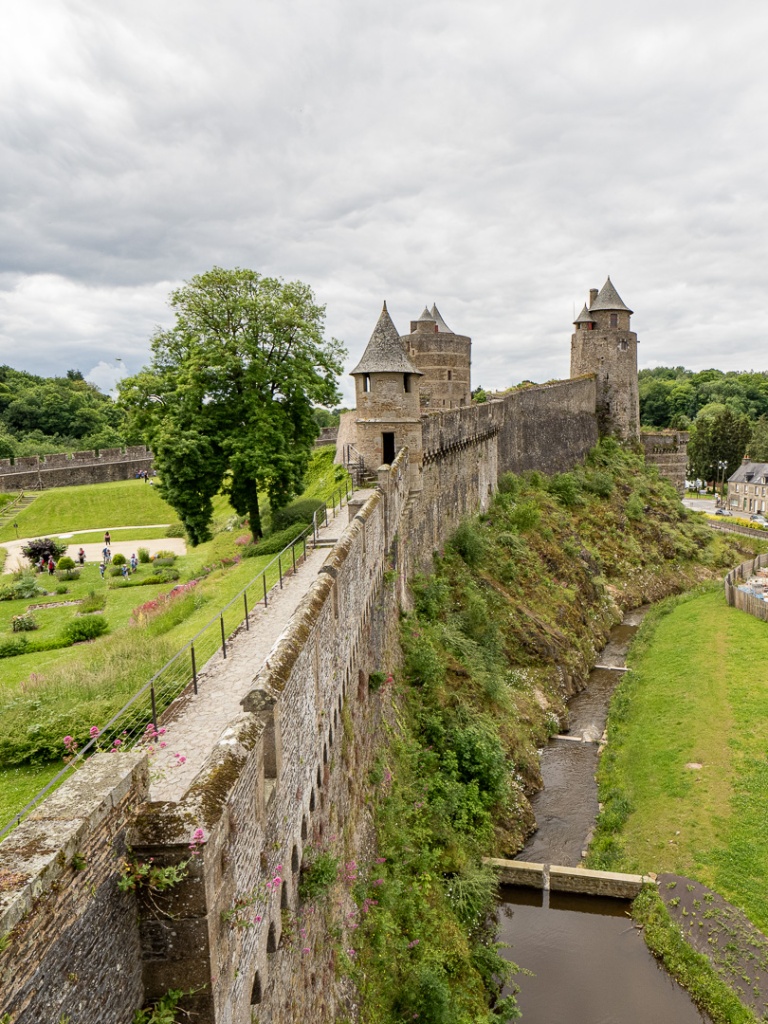
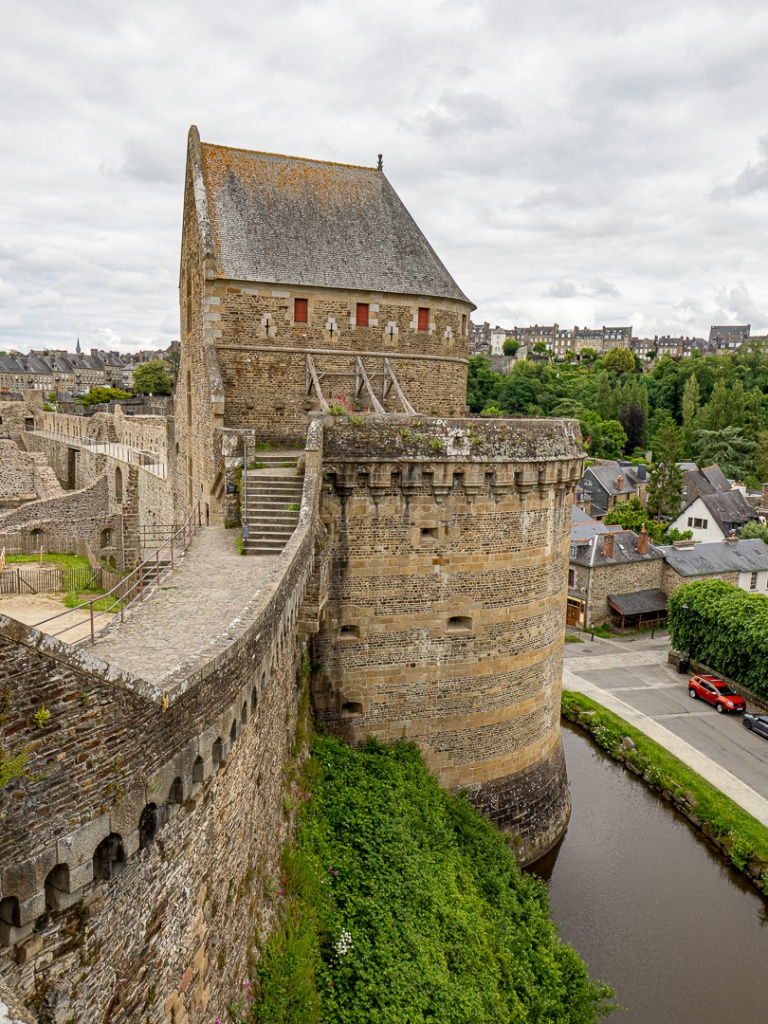
A look back from one of the higher points of the castle towards the town reveals the nature of the landscape.
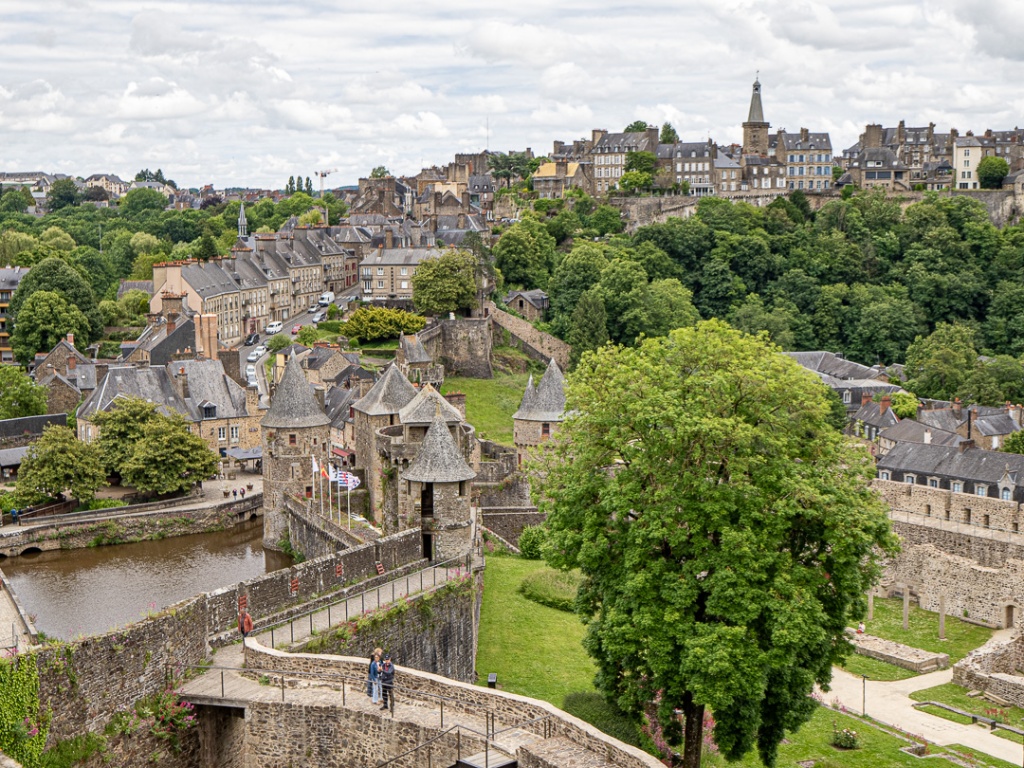
At the far end of the inner bailey, there is a redoubt with two towers. It is thought this was the first part of the castle to be constructed, initially out of wood.
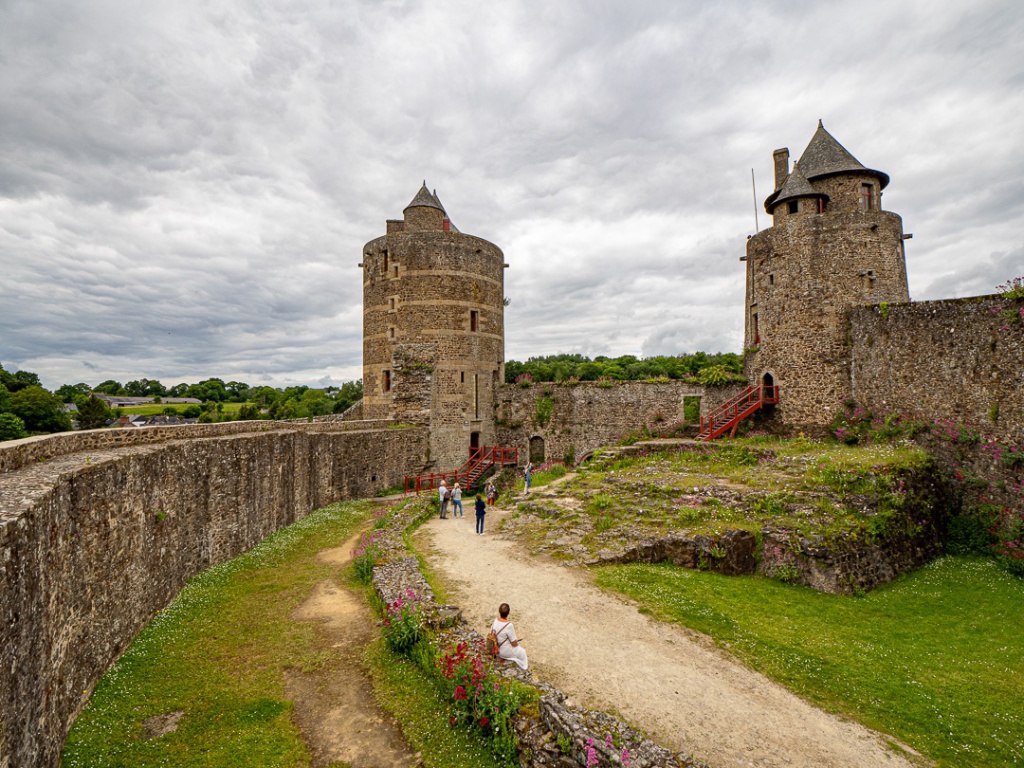
From the walls, you can also see one of the original city gateways:
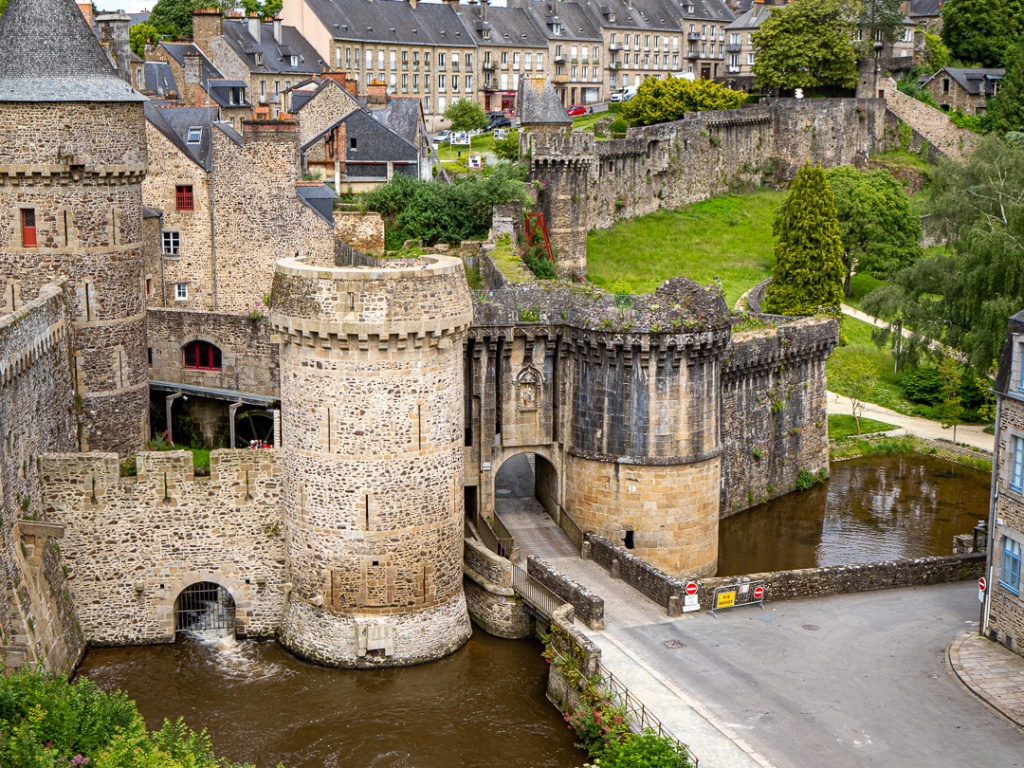
…and sitting in the medieval quarter, just below the walls, the medieval church Saint-Sulpice de Fougères which we also visited:
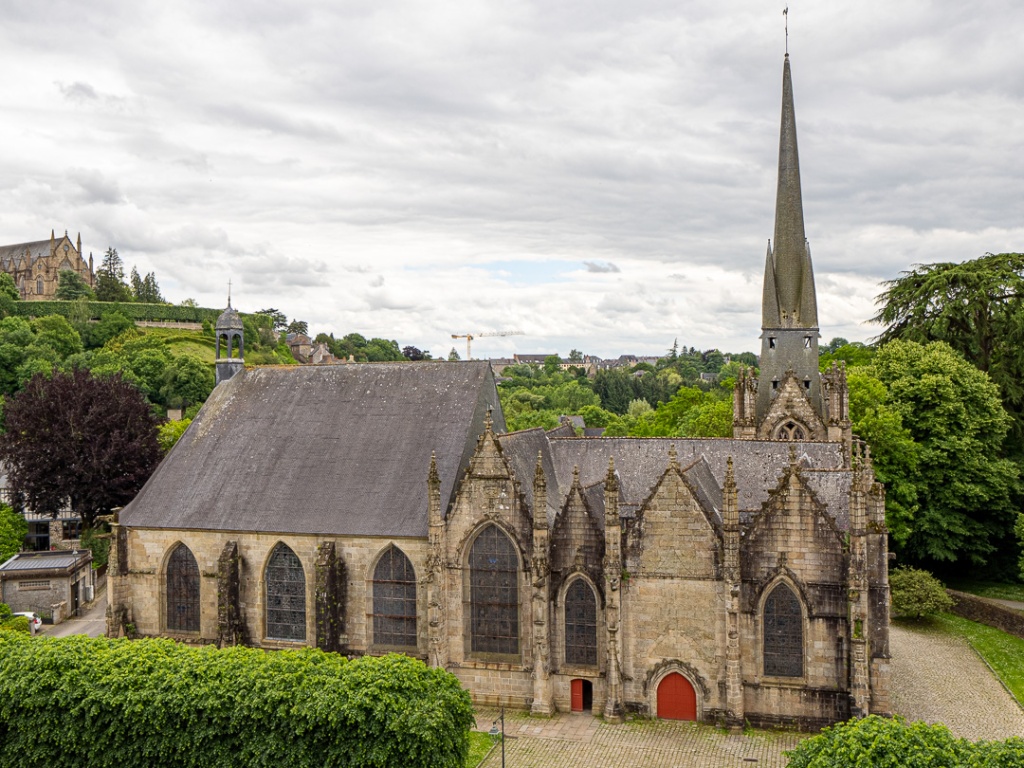

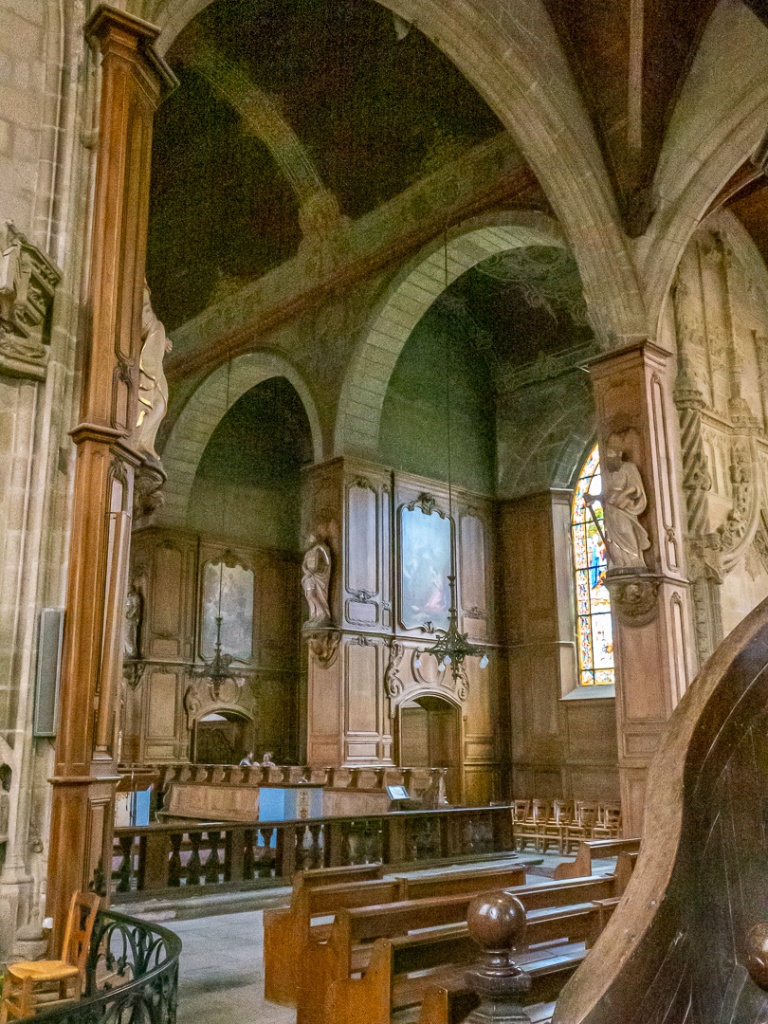
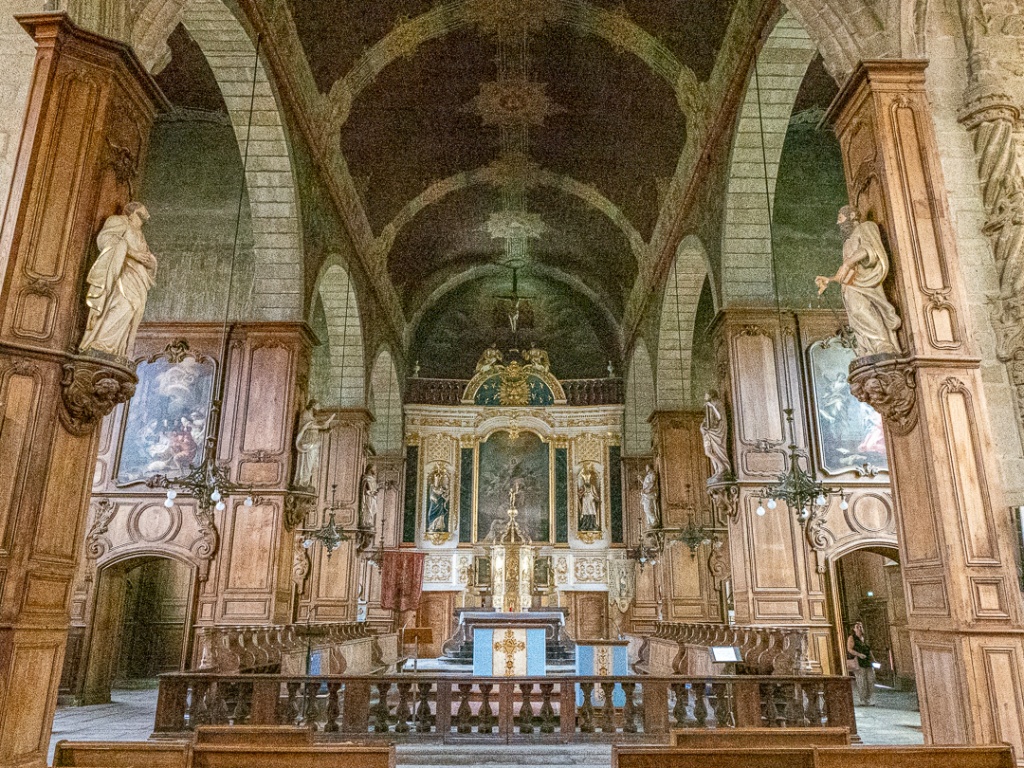
Some of the roof bosses were quite ornate, but clearly needed the cobwebs removing. There are many original painted works by old masters on the walls. This one of Christ being taken down from the cross, is enormous. The figures appear larger than life-size.
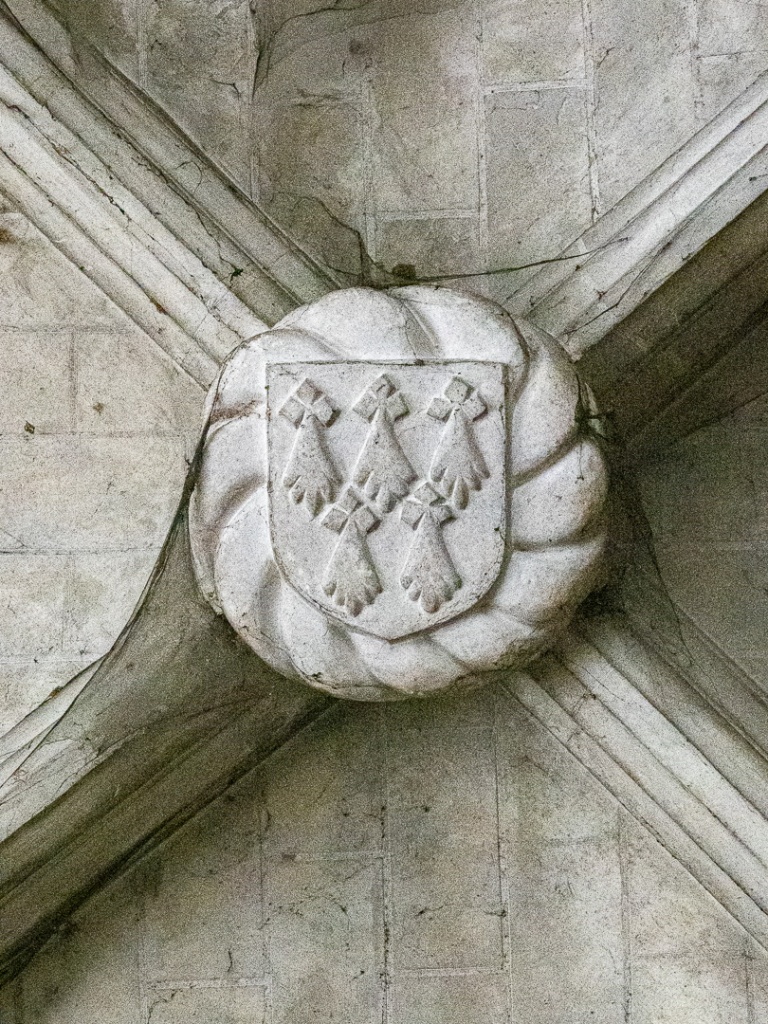
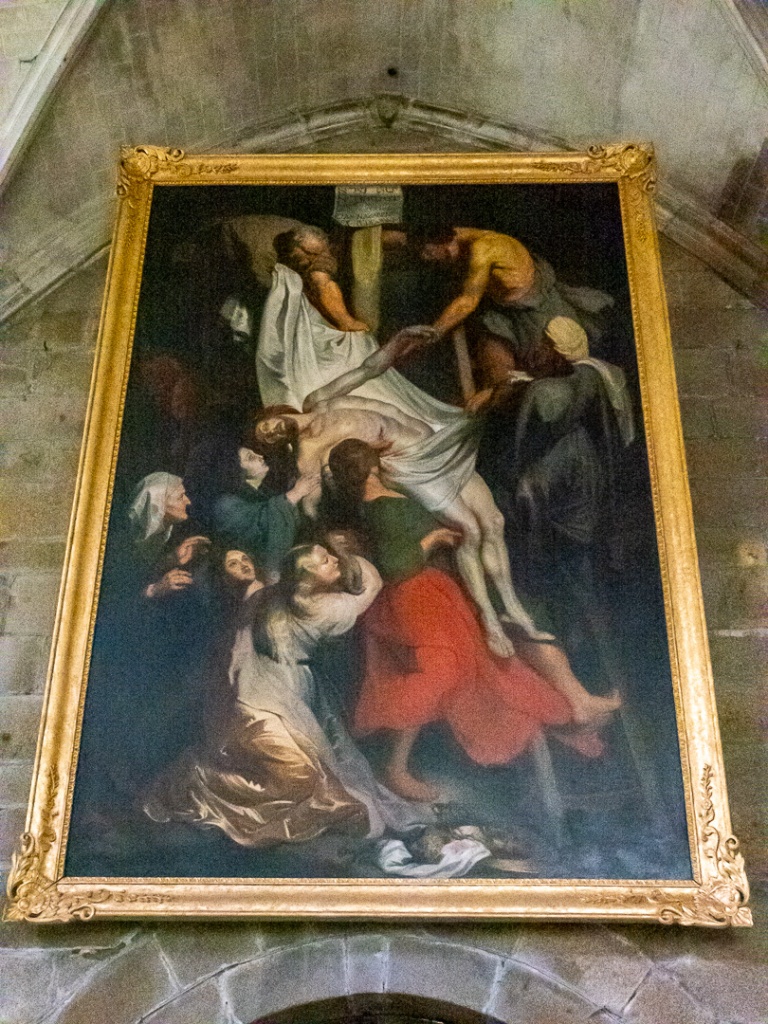
The fairly small medieval quarter has some interesting buildings:
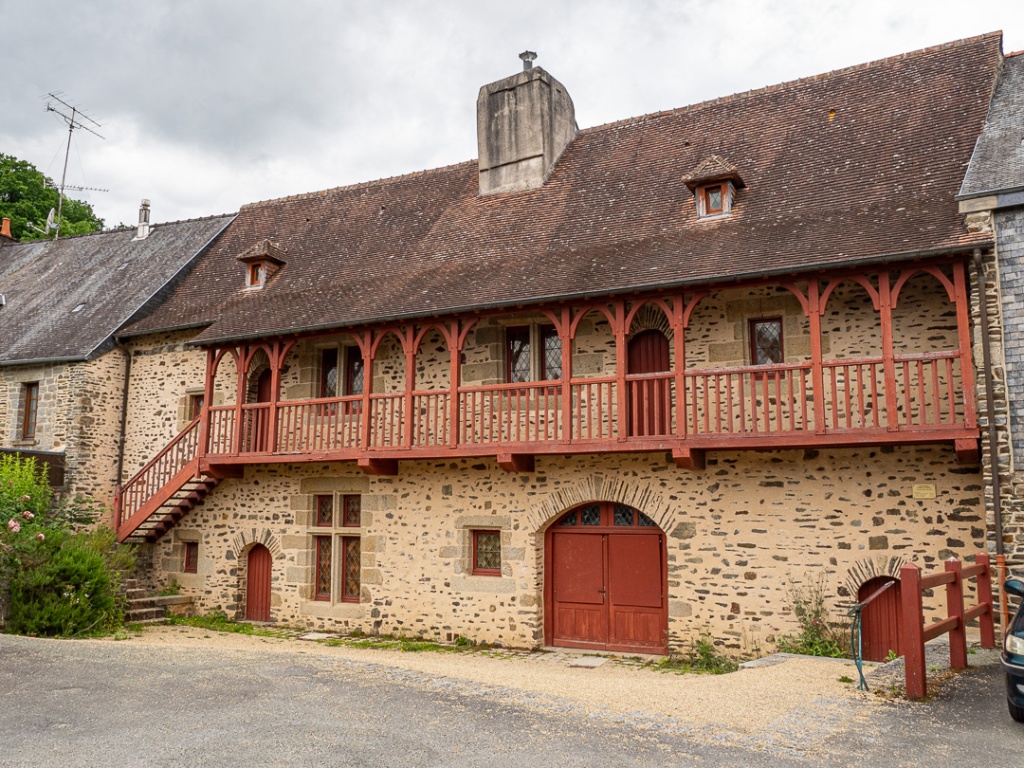
…including a lavage, where washing was done. The woman walking through when we were there, rolled up her pant-legs and dangled her feet in the stream whilst sat on the side.
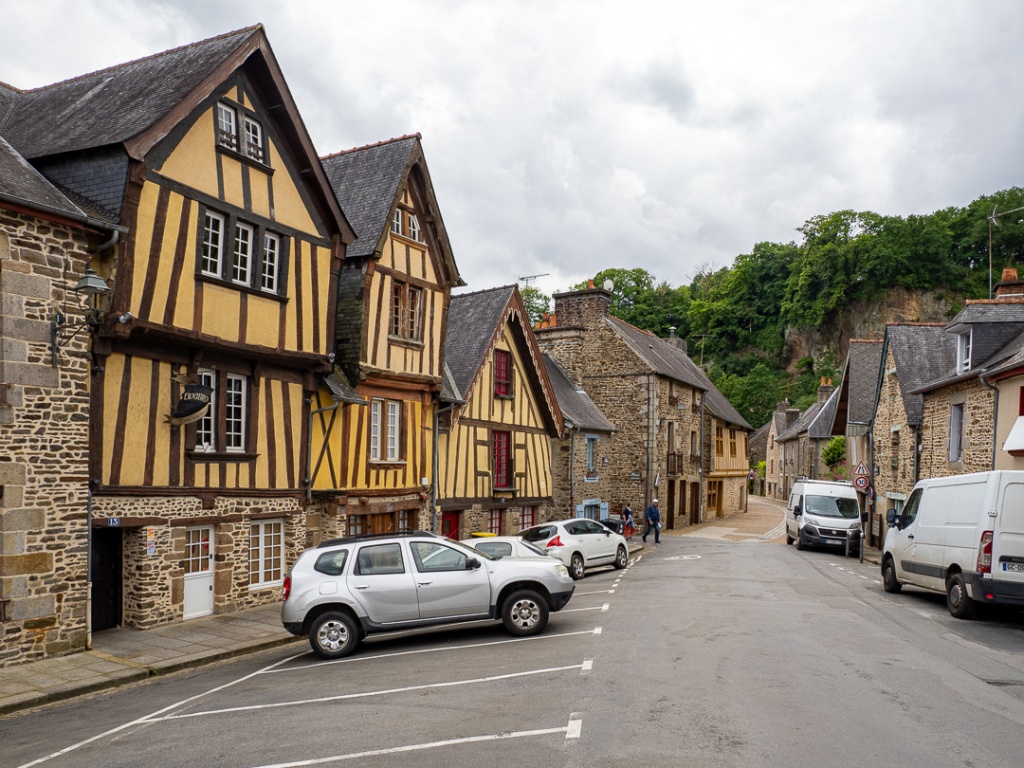
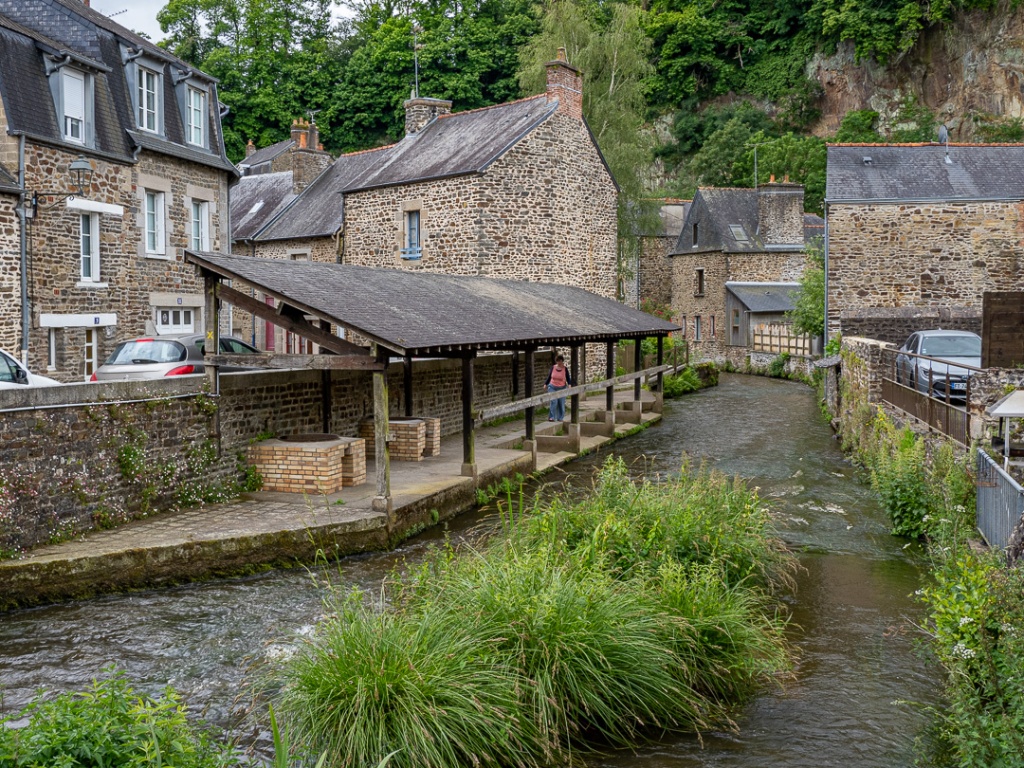
Looking up to the main town, we could just see the top of the Saint Leonard’s church. To climb back up, we had a choice of path. Either an obviously very steep set of steps, or a path through the municipal garden. We chose the garden path, which was just as steep, but mostly without steps. Though a bit prettier, perhaps.
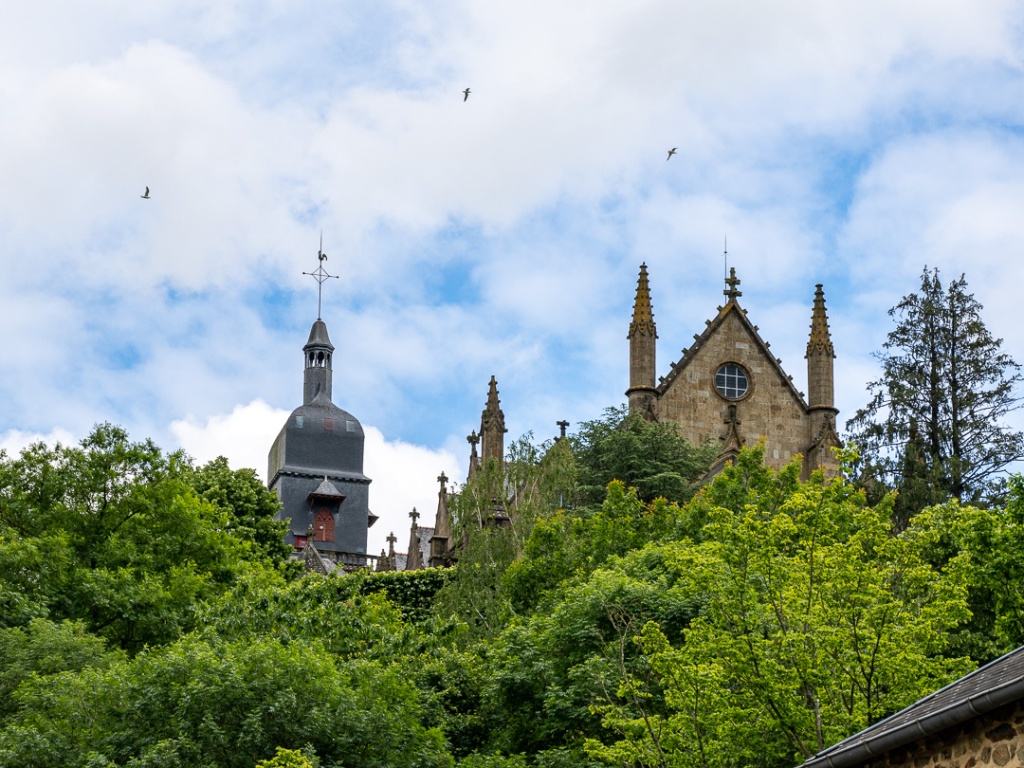
Half-way up there were two council workmen planting out bedding plants for the summer display. The butterfly motif appears to be a thing in the town.
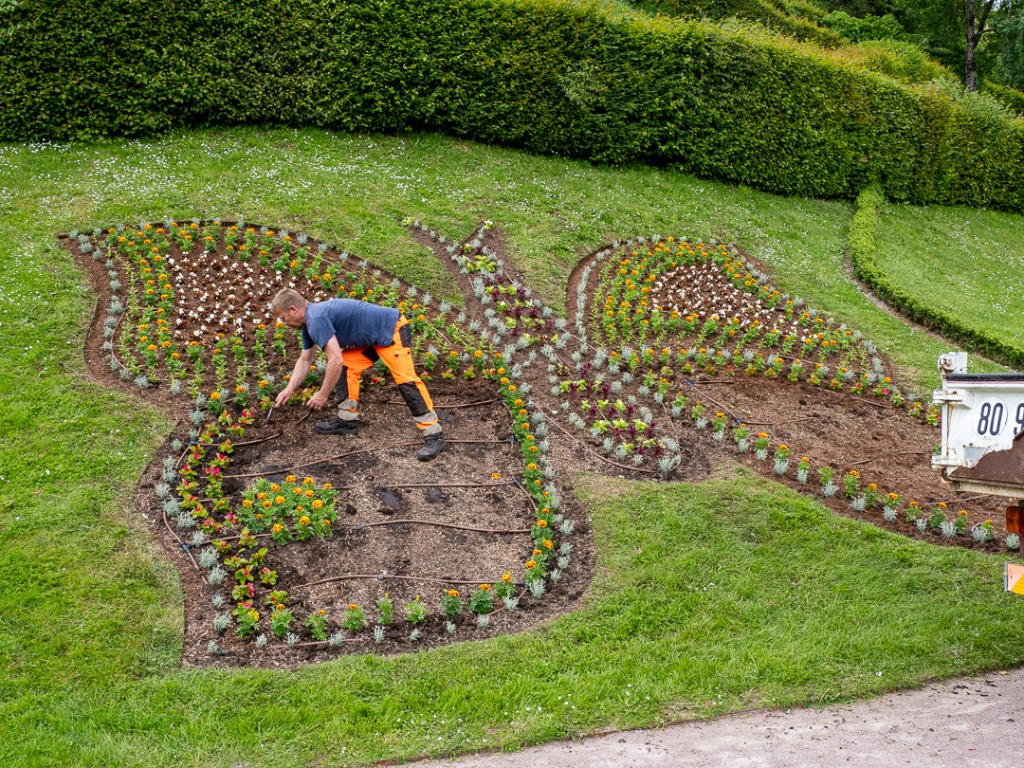
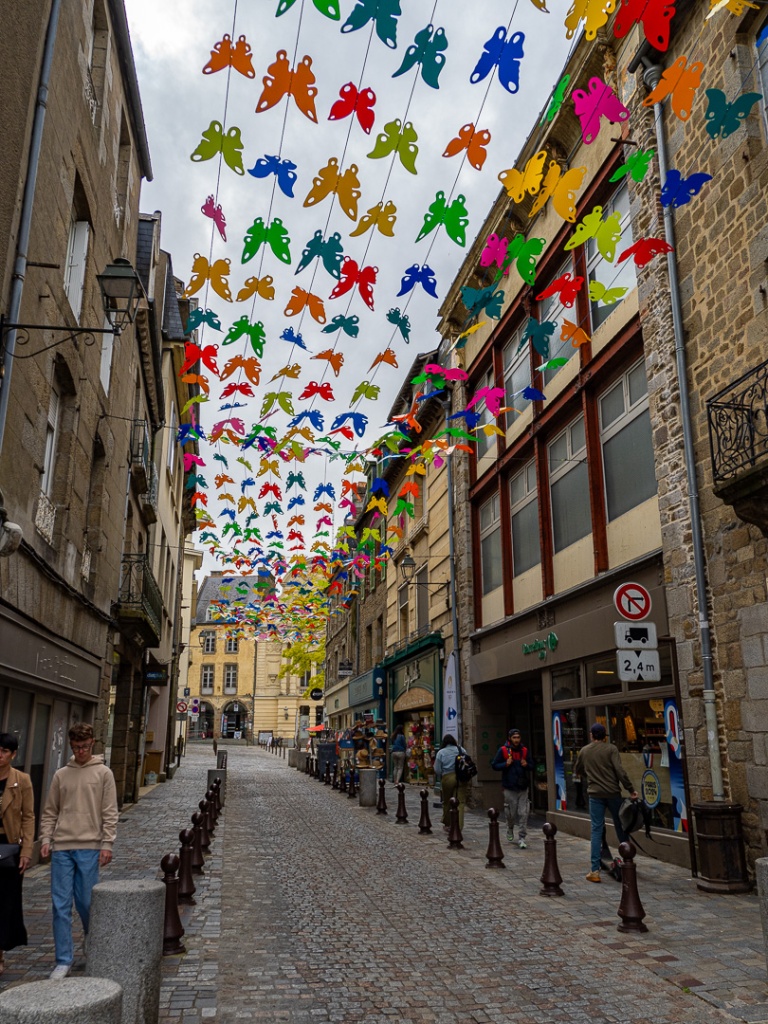
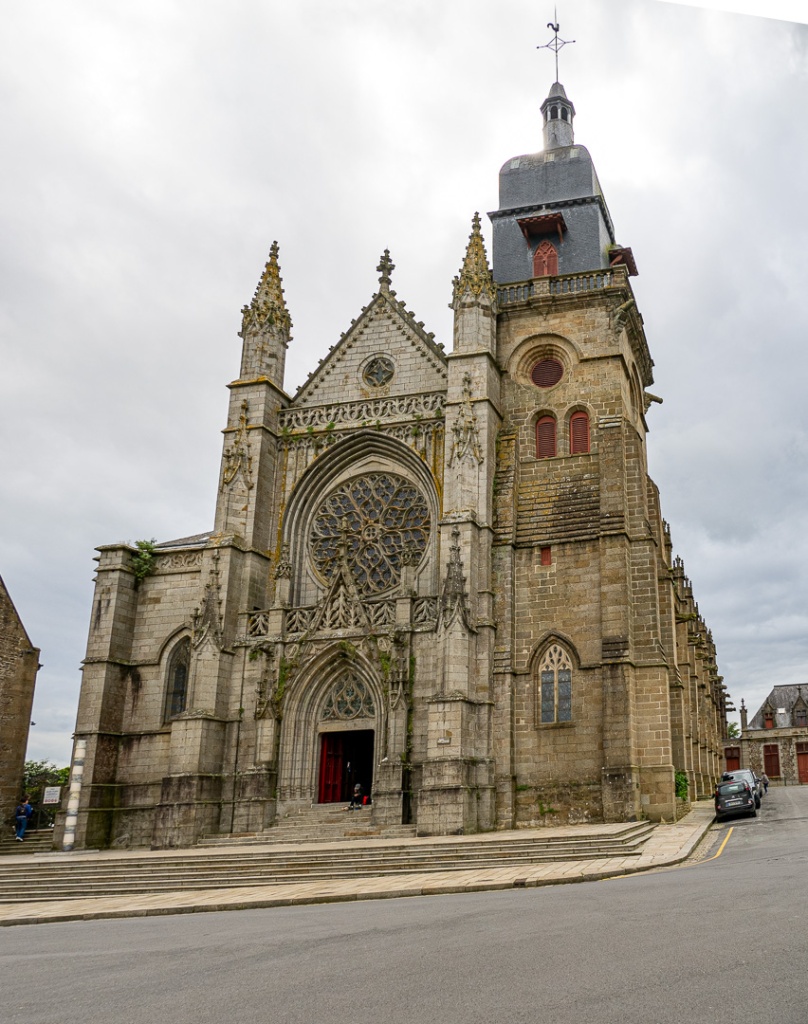
The town has two aires, a small one near to the castle and another, which we chose as our park up for the night, on the far side of the town.
It was a large, flat hard surface and there were around 40 motorhomes parked there for the night, but there was room for many more. It was free to stay and services (on the road outside) were also free, but not so easy to access. I could not be sure that the drinking water tap had not been used to rinse cassettes, so we passed.
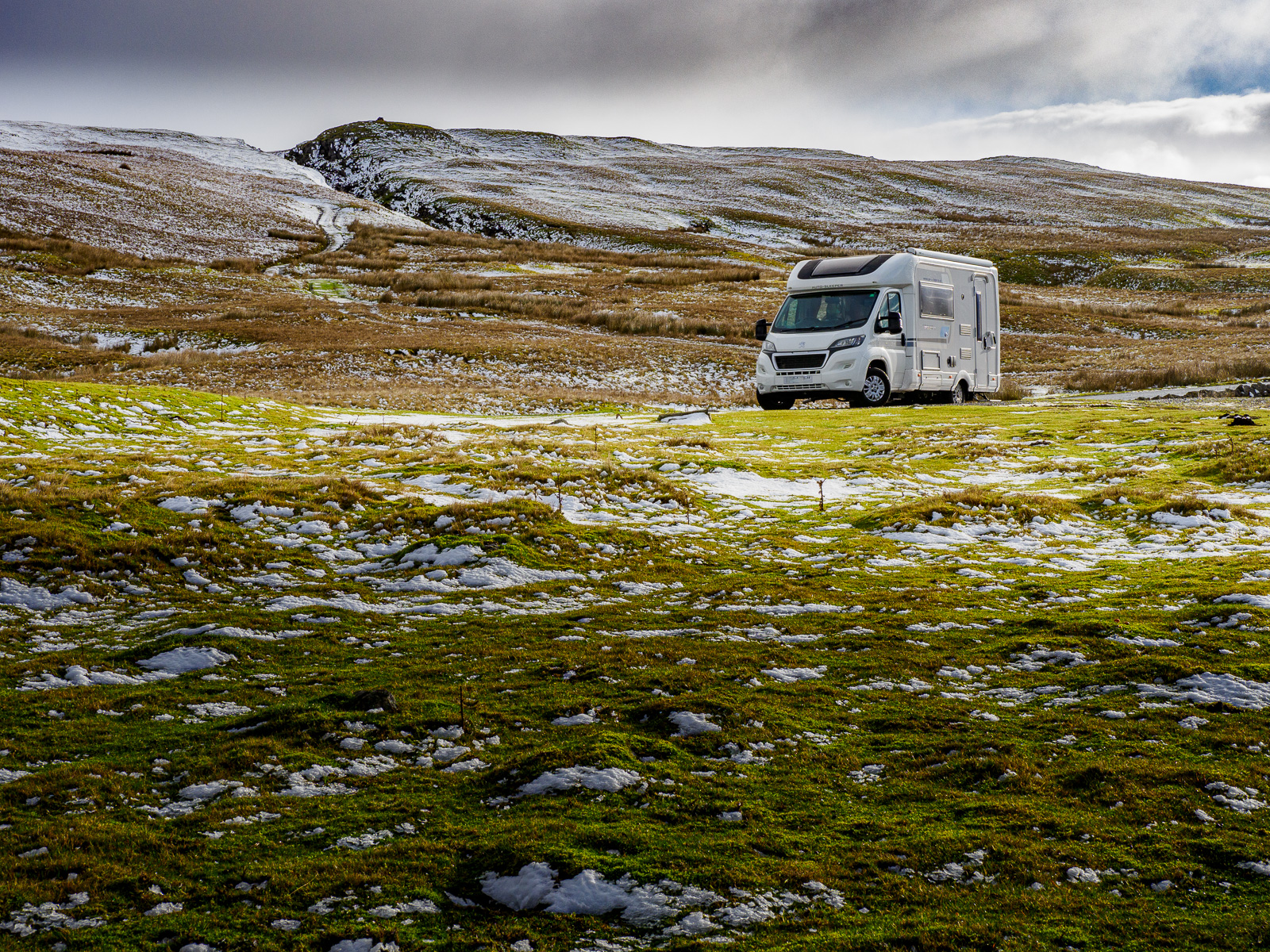


Beautiful castle and village 😍.
LikeLike